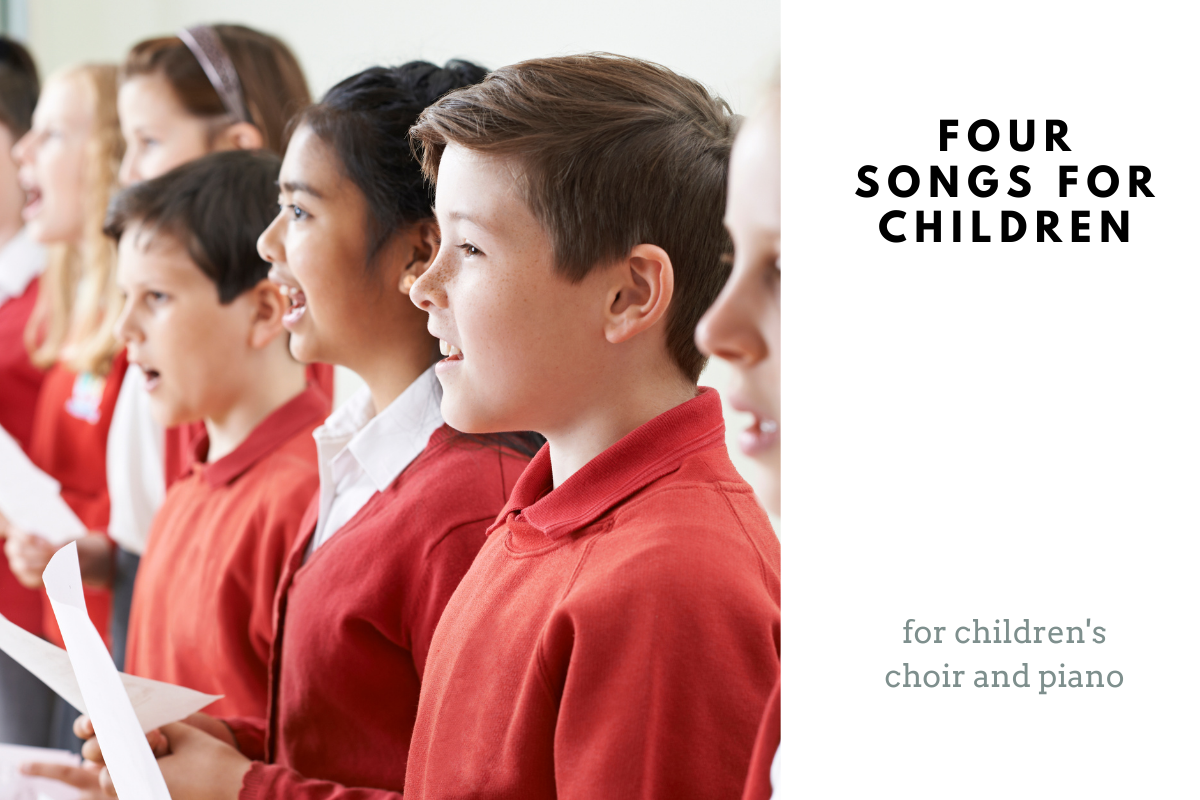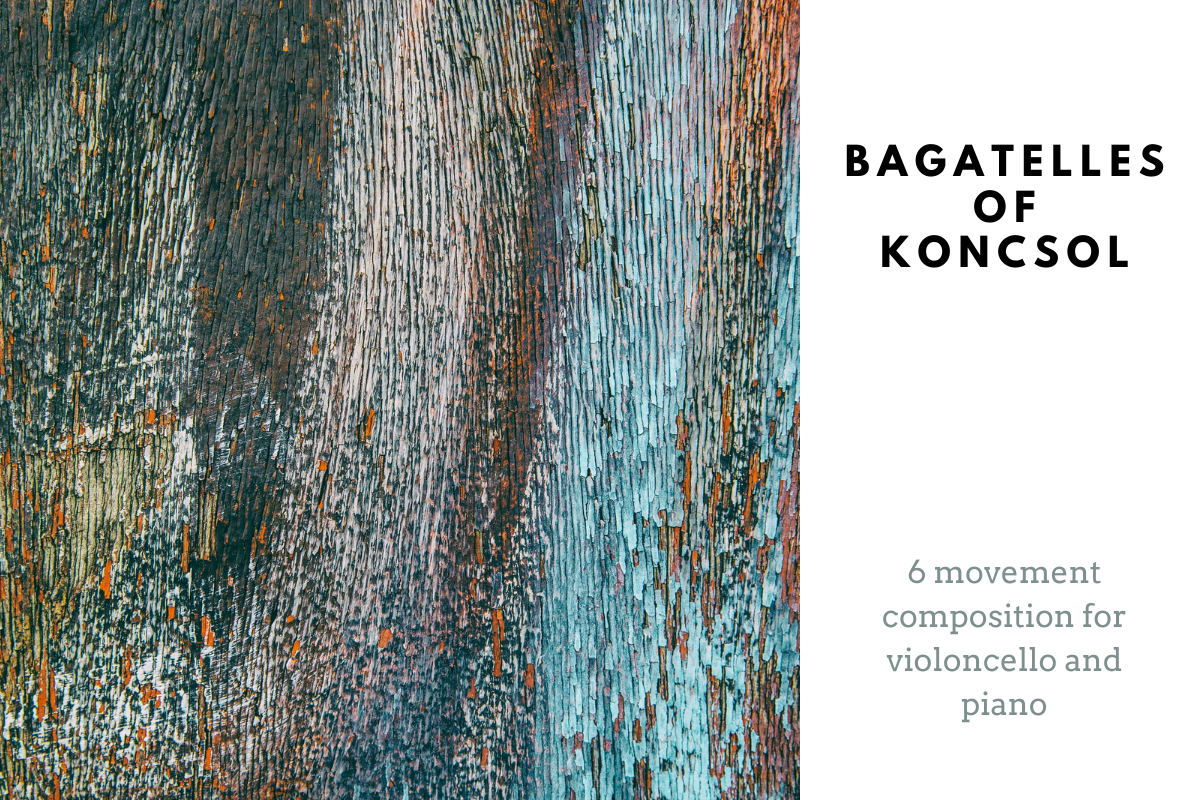Orchestral Suite

Original title: Zenkari szvit
duration: approx. 24 minutes
Arrengement:
Flute 1.
Flute 2./Picc.
Flute 3./Picc.
Oboe 1.2.
Cor Anglais
Clarinet in Bb 1.2.
Clarinet in Bb 3./Bass clar. in Bb Bassoon 1.2.
Horn in F 1.3. Horn in F 2.4. 4 Trumpets in C 3 Trombones Tuba
Timpani
3 percussionists (Gong, Snare Drum, Bass Drum, Cymbals,Wood Block,Triangle,Tamburine, Glockenspiel, Xilophone, Windchimes)
2 Harps
Violin I Violin II Viola Violoncello Contrabass
First performed on 9th January 2020 at
Győr Philharmonic Orchestra
conducted by: Zsolt Hamar
Composer’s comments:
I wrote my orchestral suite in 2015. It is based on my diploma piece composed in 1994, which was written for two soloists and an orchestra. I already felt the need for the rearranging the presentation of the vocal version, but I had to move away from the piece so much that I could start again with a clear mind, so by 2015 the composing of the final form and content was postponed. The first form of the piece made it clear that it was actually an orchestral work that didn’t really allow room for the two singers, and it wasn’t a matter of volume or instrumentation technique, there were much more substantial signs of that. Following this thinking, I redefined the musical texture, so the Orchestral Suite was born. Reflecting on the correlation between ballets and suites made from them, the title suggests a bit that there is a basic work that has this form of suite, but the free, often contrasting parts of the “suite” genre designation as characteristic items also applies to the piece.
In terms of structure, it has six parts. The brief introduction of 1st Movement is triggered by an English horn over an almost motionless string section, to which the woodwinds join. From this is born the movement, the dense, loud, dystopian, dramatic fresco, which is divided by woodwind and brass solo parts. The 2nd movement appears as a contrast, after the overwhelming, pulsating 1st movement, we actually hear a chamber music arrangement, over the ticking eighths of the harp and the xylophone a lyrical English horn is sung, to which the flute solo also joins. The disciplined lyric that sounds after the disintegrating drama does not bring about dissolution, but rather sits in a kind of waiting, focused silence. A soft, short, almost parenthesed item, a strong contrast to the first.
The 3rd movement is an extroverted, mosaic-colored music that actually operates with circus instrumentation effects. Its performance requires concentrated plasticity throughout due to the frequent successive character and instrumental changes. Although it has a saturated orchestration, it should still be light-hearted. This item clearly conveys a positive, playful atmosphere, but its playfulness is naive, so you can’t take the serenity really seriously.
The next movement, 4, is arranged around the sound of “F sharp”, which starts with a large unison and then dominates the music later. It contrasts with the saturation of 3rd Movement with its simplexity. This is again a slow, short movement, which is its 2nd pair, but here the seriousness of the message is indicated by large unison blocks. The main role of the woodwinds and deep strings is to articulate what they have to say, grouped in one way or another. Towards the end, the movement fades and simplifies, the flute ostinato fluttering over the bells of the harps, through this musical texture we hear the initial, large-scale melody on basses and cellos, English horns and bassoons. The movement dissolves into a quartet-like, pure harmony in D major, closing with a sentimental seventh interval sound familiar from movie soundtracks.
5th and 6th Movements play attacca . The loudness of 5th Movement is a bit reminiscent of 3rd Movement, but it is gloomy, masculine, bacchanalian based. Xylophone sixteenths signal the start 6th Movement, creating a curtain-like motif with great orchestral hits. It dissolves into a patch-like, less motive, quiet middle section, followed by the exposed, dramatic, over-romanticized climax, which can also be interpreted as the climax point of the whole piece.
The pairs arrangement of the piece structure is shown in 5th and 6th Movement. appears in a kind of cohesion, the extroverted and introverted elements build the musical process by condensing and interrupting each other. Eventually, the energies are extinguished, losing their strength, silent, almost giving up the struggle, without dissolving.
The work was made with the support of the Hungarian National Fund.




